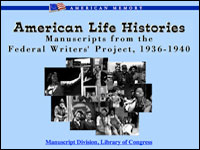When a student’s [writing] consists of nothing more than handouts and notes copied verbatim, a learning opportunity has been missed.
—Amy Benjamin ()
I emphasize student writing in my teaching. Writing, after all, is simply putting thoughts on paper and so, in a very real sense, writing is thinking. If my students learn to write clearly, concisely, accurately, and completely they are disciplining their historical thinking. As I tell students in my 7th-grade classroom, because of this emphasis their writing is what will count the most in my class—not the quizzes or the test, but the writing.
There is one overriding thing that we can do to help our students improve their writing: have them write a lot, and write substantively. I have created several posters that I have up in my classroom that relate to the writing that students will undertake in class. One lists the thinking standards that are emphasized in class ("be clear, be accurate, be complete, be deep"; see my earlier blog entry) and the second contains a quote from Albert Einstein: "You do not understand something until you can explain it to your grandmother." "Everything you write," I tell them, "must be so clear, so accurate, so complete, that even a person who knows nothing of the topic about which you are writing (say your grandmother), will understand it after they have finished reading what you wrote."
Writing Strategies
Processing Notebooks. Students can use writing notebooks to process the varied learning experiences in which they engage. Whatever these experiences, be they interacting with learning stations, viewing a segment from a video, or reading from primary sources or their textbooks, students need to process the information and ideas they are learning. There are many quick-write strategies that can be used for this processing. Whatever students write, the emphasis should be on clarity and completeness (“make it short and sweet”).
Magnet Summaries. The magnet summary strategy is an excellent strategy that asks your students to process their understanding of content by thinking it through completely and writing it out. Students read over a passage and then write a one- or two-word “magnet word” which captures what that passage is all about (it may be the title of a section or speech). This word, or phrase holds the rest of the ideas together (as a magnet would hold nails). The magnet word "attracts" just main ideas, so students next list three or four phrases that contain the main ideas of the section. They then use the magnet words and main idea phrases in writing a concise summary of one or two sentences that briefly but completely explains the content of the reading. Following the summary, I ask students for a connection piece. Connection is a literacy strategy in which students think and write about how a reading connects to something they have learned previously, something in current events, or something in their daily lives.
As an example, imagine you have assigned a magnet summary for President Lincoln’s Gettysburg Address. Here is what a magnet summary might look like:

Summary: In the Gettysburg Address, President Lincoln spoke of the Revolutionary War and the creation of the American nation dedicated to freedom and liberty for all people. He told the people that we were now fighting a Civil War testing whether this type of government could survive, fighting to bring about a new birth of freedom for those held in slavery who did not have liberty, and fighting to ensure that our form of government (by and for the people of America) would last forever.
Connection: I connect President Lincoln’s new birth of freedom to the rights to life, liberty, and the pursuit of happiness in our Declaration of Independence and the Bill of Rights. President Lincoln said that we were fighting the Civil War to make certain everyone had those rights.
Magnet summaries can be used in a variety of ways, but their essence is always the same: having our students think through what they are reading and write about their thoughts in a way that is concise yet complete. My favorite use is in a cooperative group where each student has a role. The roles are printed on four cards: read, main ideas, summary, connection. After they have read a section, students will identify the main ideas, write a shared magnet summary, and then exchange cards for the next section of the reading.
Sam Wineburg and Daisy Martin wrote "The teaching of history should have reading and writing at its core" (). Using notebooks to process information and ideas and using strategies like the magnet summary to prompt students to learn to identify, articulate, and connect main ideas from their readings helps us teach the literacy essential to history and historical thinking.



